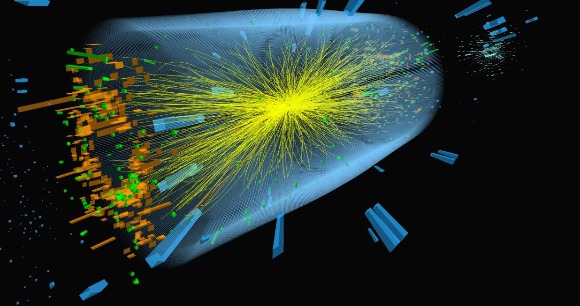Physics World(물리,수학)
두 가지 그래프 더해서 fitting 하기. 본문
728x90
반응형
ROOT 사용해서 fitting하기.
$$background:y=a+bx+cx^2$$
$$lorentzianPeak:y={ \frac{0.5ab}{\pi} \over (x-c)^2 + 0.25d^2 } $$

#include "TH1.h"
#include "TMath.h"
#include "TF1.h"
#include "TLegend.h"
#include "TCanvas.h"
// Quadratic background function
Double_t background(Double_t *x, Double_t *par) {
return par[0] + par[1]*x[0] + par[2]*x[0]*x[0];
}
// Lorenzian Peak function
Double_t lorentzianPeak(Double_t *x, Double_t *par) {
return (0.5*par[0]*par[1]/TMath::Pi()) /
TMath::Max( 1.e-10,(x[0]-par[2])*(x[0]-par[2])
+ .25*par[1]*par[1]);
}
// Sum of background and peak function
Double_t fitFunction(Double_t *x, Double_t *par) {
return background(x,par) + lorentzianPeak(x,&par[3]);
}
void FittingDemo() {
//Bevington Exercise by Peter Malzacher, modified by Rene Brun
const int nBins = 60;
Double_t data[nBins] = { 6, 1,10,12, 6,13,23,22,15,21,
23,26,36,25,27,35,40,44,66,81,
75,57,48,45,46,41,35,36,53,32,
40,37,38,31,36,44,42,37,32,32,
43,44,35,33,33,39,29,41,32,44,
26,39,29,35,32,21,21,15,25,15};
TCanvas *c1 = new TCanvas("c1","Fitting Demo",10,10,700,500);
c1->SetFillColor(33);
c1->SetFrameFillColor(41);
c1->SetGrid();
TH1F *histo = new TH1F("histo",
"Lorentzian Peak on Quadratic Background",60,0,3);
histo->SetMarkerStyle(21);
histo->SetMarkerSize(0.8);
histo->SetStats(0);
for(int i=0; i < nBins; i++) histo->SetBinContent(i+1,data[i]);
// create a TF1 with the range from 0 to 3 and 6 parameters
TF1 *fitFcn = new TF1("fitFcn",fitFunction,0,3,6);
fitFcn->SetNpx(500);
fitFcn->SetLineWidth(4);
fitFcn->SetLineColor(kMagenta);
// first try without starting values for the parameters
// This defaults to 1 for each param.
// this results in an ok fit for the polynomial function
// however the non-linear part (lorenzian) does not
// respond well.
fitFcn->SetParameters(1,1,1,1,1,1);
histo->Fit("fitFcn","0");
// second try: set start values for some parameters
fitFcn->SetParameter(4,0.2); // width
fitFcn->SetParameter(5,1); // peak
histo->Fit("fitFcn","V+","ep");
// improve the picture:
TF1 *backFcn = new TF1("backFcn",background,0,3,3);
backFcn->SetLineColor(kRed);
TF1 *signalFcn = new TF1("signalFcn",lorentzianPeak,0,3,3);
signalFcn->SetLineColor(kBlue);
signalFcn->SetNpx(500);
Double_t par[6];
// writes the fit results into the par array
fitFcn->GetParameters(par);
backFcn->SetParameters(par);
backFcn->Draw("same");
signalFcn->SetParameters(&par[3]);
signalFcn->Draw("same");
// draw the legend
TLegend *legend=new TLegend(0.6,0.65,0.88,0.85);
legend->SetTextFont(72);
legend->SetTextSize(0.04);
legend->AddEntry(histo,"Data","lpe");
legend->AddEntry(backFcn,"Background fit","l");
legend->AddEntry(signalFcn,"Signal fit","l");
legend->AddEntry(fitFcn,"Global Fit","l");
legend->Draw();
}반응형
Comments
